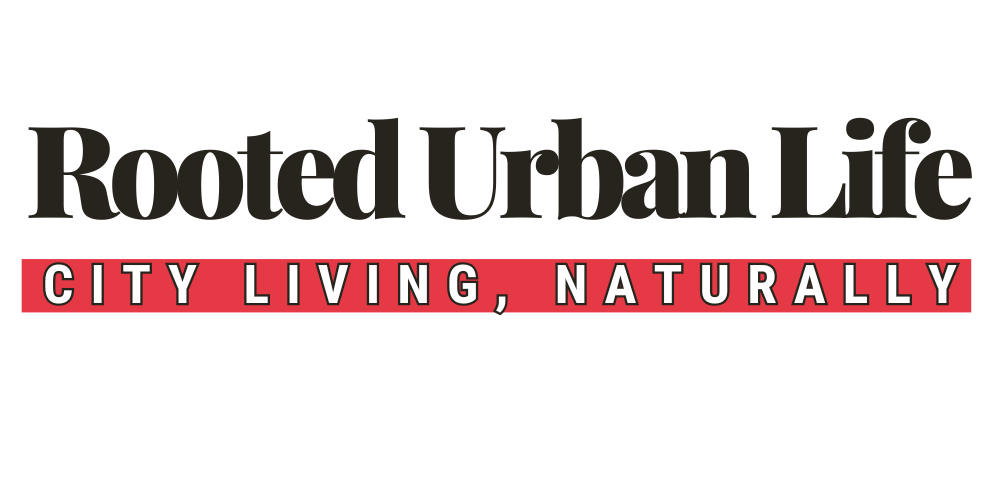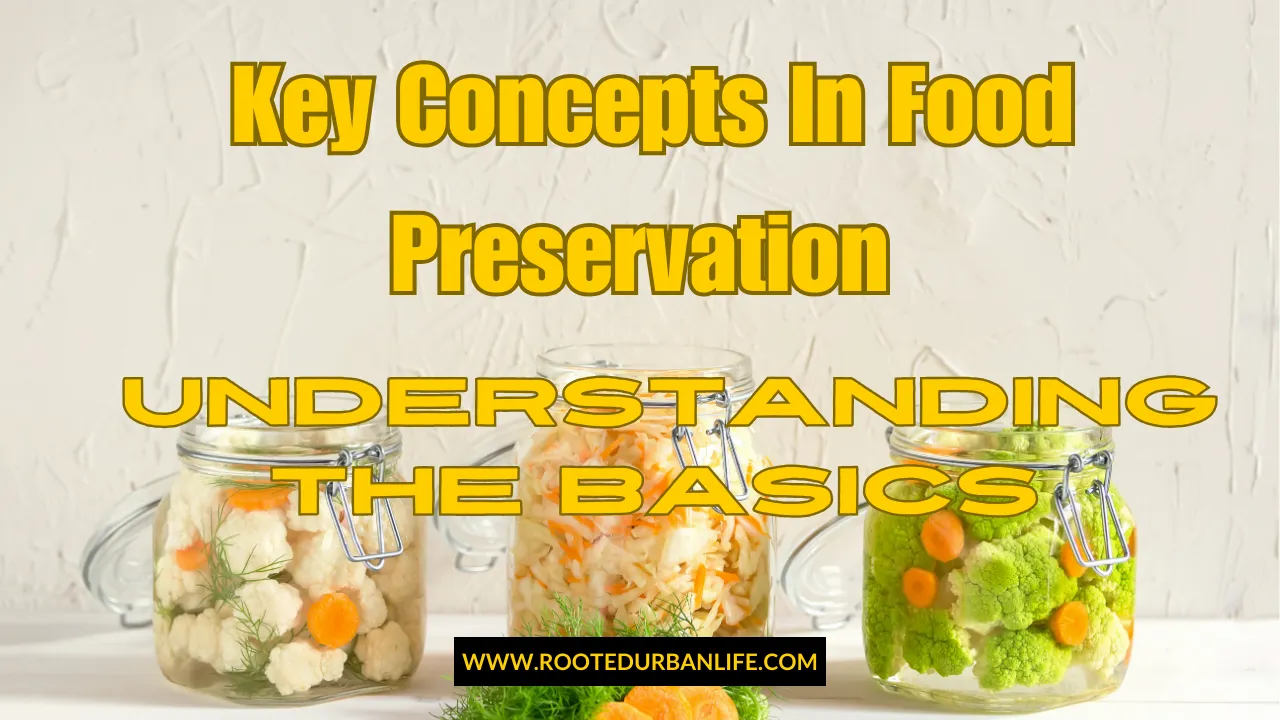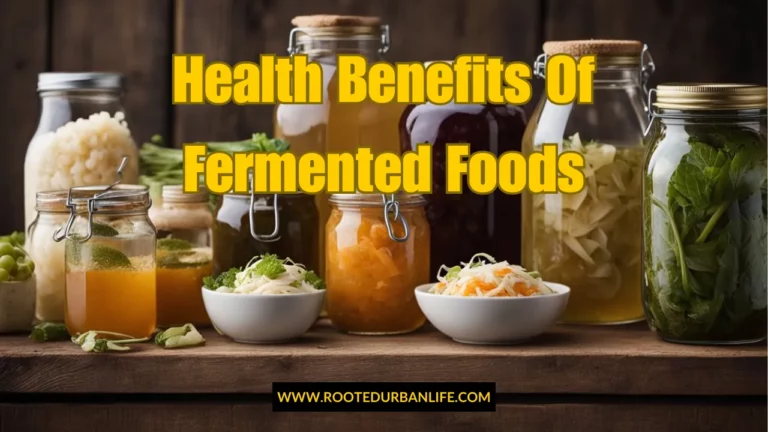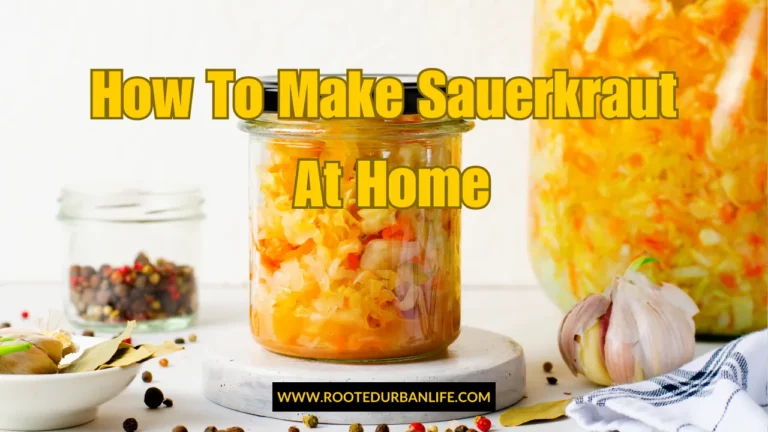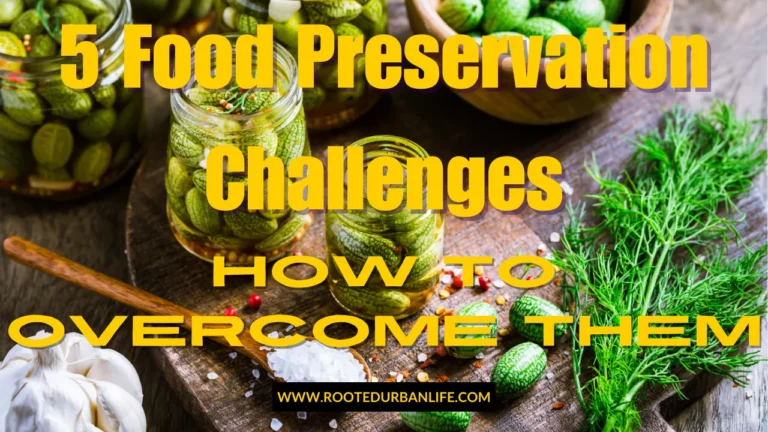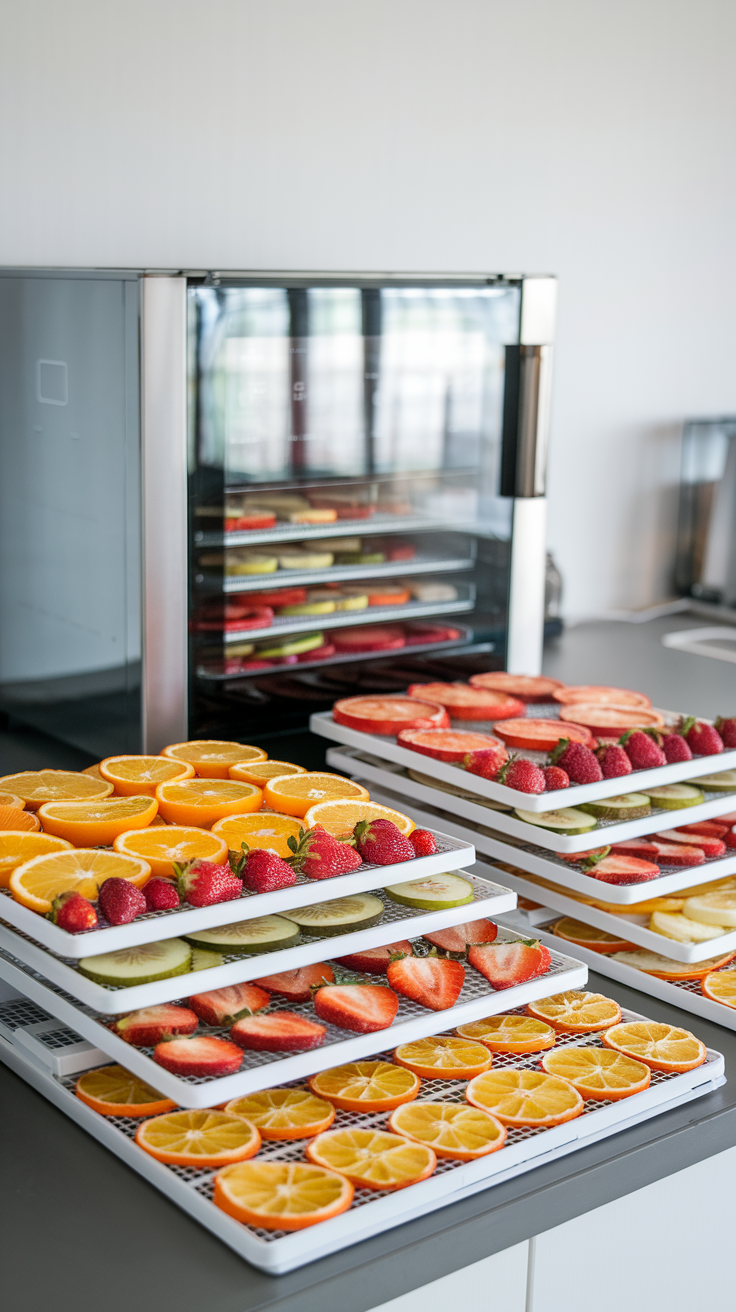Understanding The Basics: Key Concepts In Food Preservation
Whether you’re looking to save money, reduce food waste, or have access to seasonal flavors all year round, understanding the key concepts in food preservation is a skill worth learning.
Food preservation is a way to maintain nutritional value, texture, and taste over extended periods.
Historically, preserving food was vital for survival. Early techniques like sun drying, salting, and fermenting were necessary to keep food available during harsh seasons when fresh produce wasn’t an option.
Today we have access to many ways of preserving foosd, allowing us to save money by buying in bulk and reducing our environmental footprint by minimizing waste.
Read more: Understanding The Basics: Key Concepts In Food Preservation| Food preservation refers to various methods used to extend food’s the shelf life by inhibiting spoilage. The main techniques include heat-based methods like canning and pasteurization, cold-based methods such as freezing and refrigeration, moisture-removal techniques like drying, and chemical preservation using salt, sugar, or fermentation. Each method has its unique benefits and is suited to different types of food, ensuring that flavors, textures, and nutrients are maintained for long-term storage. |
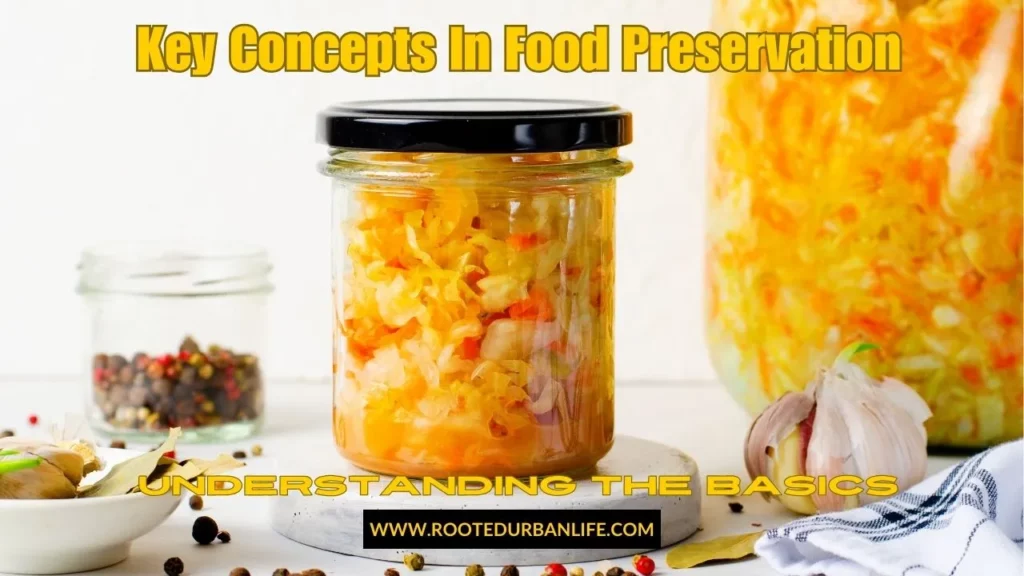
Understanding The Basics: Key Concepts of Food Preservation
There are different types of food preservation methods, each with its unique methods and benefits.
Heat-based methods
These are some of the most effective ways to kill bacteria and enzymes that cause food spoilage.
Canning and bottling, for example, involve sealing food in airtight containers and heating them to a specific temperature.
This process destroys microorganisms and inactivates enzymes, extending shelf life significantly.
There’s also pasteurization, which uses milder temperatures to kill pathogens without compromising the taste and nutritional value of food.
Cold-based methods
These methods slow down the activity of bacteria and enzymes.
While freezing halts microbial activity almost entirely, refrigeration keeps food at temperatures too low for most harmful bacteria to thrive.
Both methods can maintain the food’s original flavor, texture, and nutritional content when done correctly.
Drying methods
They remove moisture from food, effectively preventing bacterial growth.
Dehydration, freeze-drying, and simple air drying are common techniques in this category.
These methods not only retain the food’s essential nutrients but also reduce the weight and volume, making storage much more manageable.
Chemical methods
These methods involve adding certain substances to food to prolong its shelf life.
Preservatives like salt, sugar, and vinegar are traditional choices, and they work by creating unfavorable conditions for bacterial growth.
Fermentation is another fascinating chemical method, where beneficial bacteria convert sugars into acids, creating an environment that preserves the food naturally.
Choosing the right method depends on the type of food you’re preserving and your storage capabilities. By exploring these diverse techniques, you can not only prolong the shelf life of your food but also ensure it remains as delicious and nutritious as possible.
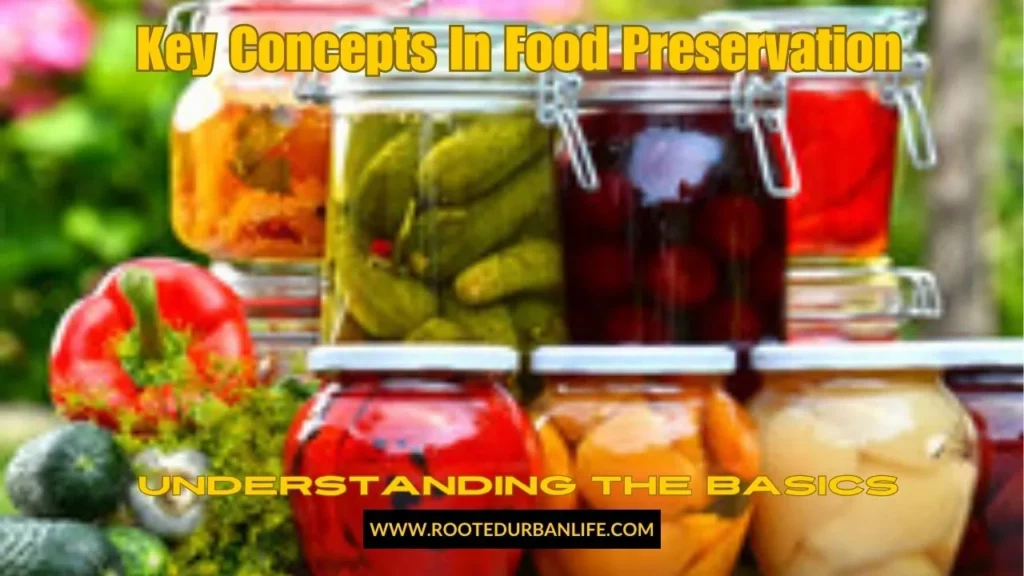
Key Concepts in Heat-Based Food Preservation
Heat is a powerful tool against microbes and enzymes that lead to food spoilage. By understanding how heat works, you can choose the best method to preserve your food effectively.
One of the primary mechanisms behind heat-based preservation is denaturing proteins in bacteria and enzymes.
When exposed to high temperatures, these proteins lose their structure, rendering them inactive and unable to spoil food.
This is why methods like boiling, blanching, and sterilization are so effective.
Different heat treatments serve various purposes.
Blanching involves briefly boiling vegetables and then plunging them into ice water.
This stops enzyme activity, helping retain color, flavor, and nutritional value. It’s often a precursor to freezing or dehydration.
Boiling, on the other hand, cooks food at high temperatures for an extended period.
This is ideal for making soups, sauces, and stews that you can later can or jar. The intense heat ensures all potential pathogens are destroyed.
Sterilization takes it a step further by using a pressure canner.
This equipment allows you to reach temperatures above boiling, which is necessary for low-acid foods like meats and vegetables.
The higher temperature and pressure ensure that even the most stubborn microbes are eradicated.
Canning requires specific tools and techniques to be done safely.
A pressure canner is crucial for low-acid foods, while a water bath canner is suitable for high-acid foods like fruits and pickles.
Proper sealing is essential to prevent contamination; investing in quality jars and lids can make a significant difference.
Safety is always a top priority. When working with high temperatures, ensuring your equipment is in good condition and following all safety guidelines is crucial.
Always check jars for cracks before use and avoid using expired lids, as they may not seal properly.
Understanding and applying these principles can make heat-based preservation an effective way to keep your food safe and delicious for months, if not years.
Exploring Cold-Based Food Preservation Techniques
Freezing is perhaps the most convenient method of cold-based food preservation.
It works by slowing down the activity of microorganisms and enzymes, effectively halting spoilage.
One key to successful freezing is to use proper packaging.
Airtight containers or vacuum-sealed bags are ideal for preventing freezer burn, which can affect the food’s texture and flavor.
Labeling items with dates can help you keep track of how long they’ve been stored, ensuring nothing goes to waste.
Refrigeration is another accessible option for extending the shelf life of perishable foods.
While it doesn’t stop microbial activity entirely, it significantly slows it down.
Keeping your refrigerator at or below 40°F (4°C) is crucial for effective preservation.
Different foods have different optimal storage areas within the fridge.
For example, meat should be stored on the bottom shelf to prevent its juices from contaminating other foods, while vegetables often fare better in crisper drawers with controlled humidity.
Selecting the right packaging materials can make a world of difference in both freezing and refrigerating foods.
Glass containers, plastic wrap, and aluminum foil each have their own advantages and ideal use cases.
Glass is perfect for storing acidic foods, while plastic wrap offers flexibility, and aluminum foil provides an additional barrier against moisture and air.
Don’t overcrowd the freezer or fridge because proper air circulation is essential for maintaining consistent temperatures. Also, letting hot food cool down before refrigerating or freezing it can prevent raising the temperature inside the storage unit, which would compromise other stored items.
Paying attention to details like optimal storage locations and proper packaging materials helps in maximizing the effectiveness of cold-based preservation methods.
Used correctly, these techniques can dramatically reduce food waste while keeping your meals as fresh and nutritious as possible.
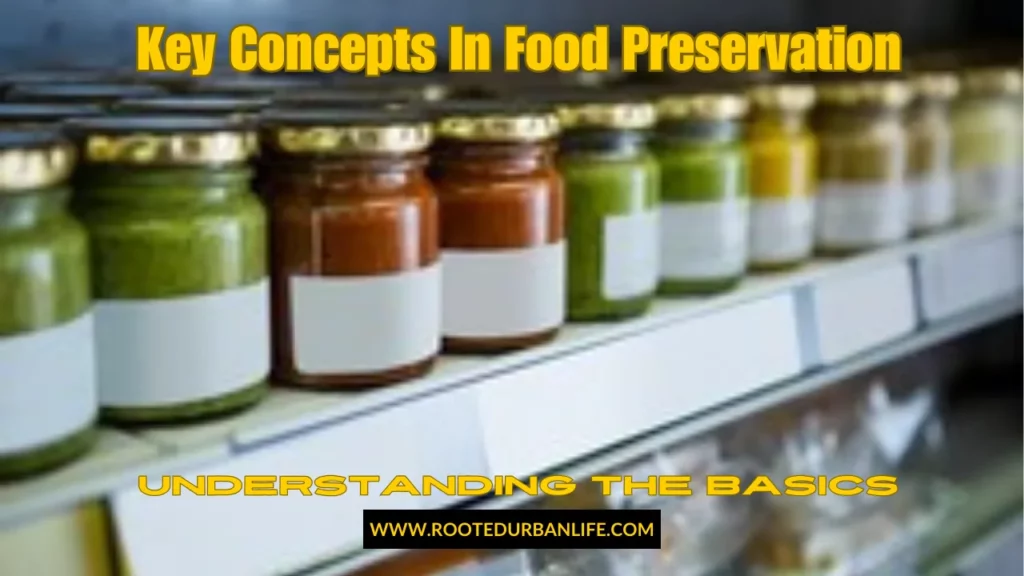
Drying and Dehydration: Removing Moisture to Preserve Food
Drying is one of the oldest food preservation methods, leveraging the simple principle of removing moisture.
Without water, bacteria and mold find it challenging to grow, making dried foods last much longer.
Different methods, such as sun drying, air drying, and oven drying, can be used depending on your resources and the type of food you aim to preserve.
Sun drying is the most traditional method and works best in hot, dry climates.
Fruits like apricots, apples, and tomatoes can be easily sun-dried. Slice them thin, lay them out on trays, and cover them with a fine mesh to keep insects away. Turn them occasionally to ensure even drying.
Air drying is ideal for herbs and some vegetables. Stringing up herbs in a well-ventilated area can effectively remove moisture without needing electricity or special equipment. For more even results, use drying racks and rotate items periodically.
Oven drying is a more controlled way to dry fruits, vegetables, and even meats. Setting your oven to a low temperature (around 140°F or 60°C) and spreading the food on baking sheets allows for uniform drying. It’s a bit faster than sun and air drying, and because it’s done indoors, you don’t have to worry about the weather.
Dehydrators are specialized appliances that offer the most consistent and efficient results. These devices circulate warm air around the food, reducing moisture levels evenly. With adjustable temperature settings, they can handle a variety of foods, from delicate herbs to hearty meats.
Once dried, store food properly. Airtight containers keep moisture out and maintain the food’s dry state. Adding silica gel packets can provide extra moisture control. Labeling with dates ensures you use the oldest items first, maintaining a fresh rotation of preserved foods.
Modern and Chemical Preservation Techniques
Chemical preservatives have long been a staple in food preservation. Ingredients like salt, sugar, and vinegar work by creating environments unsuitable for microbial growth.
Historically, these basic preservatives came into play for centuries, making it possible to store pickles, jams, and cured meats. Understanding how and when to use these chemicals can open up many preservation opportunities.
Fermentation is another intriguing method that uses beneficial bacteria to prolong shelf life.
Fermentation not only preserves food but also enhances its flavor and nutritional value.
Commonly fermented foods include yogurt, sauerkraut, kimchi, and various pickled vegetables.
The process turns sugars into lactic acid or alcohol, creating an environment hostile to harmful microbes while enriching the food with probiotics.
Always follow recommended storage guidelines, whether that means keeping something in a cool, dark place or under refrigeration. Proper labeling helps monitor how long items have been stored, ensuring you use them within their optimal time frame.
FAQs
Q: What are the most common food preservation methods?
A: The most common methods include canning, freezing, drying, fermenting, and chemical preservation (using salt, sugar, or vinegar). Each method extends the shelf life of food by inhibiting microbial growth or enzyme activity.
Q: How does food preservation prevent spoilage?
A: Food preservation techniques prevent spoilage by either killing bacteria and enzymes or slowing their activity. Methods like heating, cooling, drying, and using preservatives (salt, sugar, vinegar) create conditions where bacteria cannot thrive.
Q: What is the safest method for preserving low-acid foods like vegetables and meats?
A: Pressure canning is the safest method for preserving low-acid foods like meats, vegetables, and soups. The high temperatures achieved during pressure canning destroy harmful bacteria like botulism, ensuring food safety.
Q: Can you preserve food without a freezer or fridge?
A: Yes, methods like drying, canning, and fermenting don’t require refrigeration or freezing. For example, dried fruits and vegetables can last for months when stored in airtight containers, and fermented foods like sauerkraut can be preserved naturally.
Q: What foods can I preserve by fermentation?
A: Common foods for fermentation include vegetables like cabbage (for sauerkraut), cucumbers (for pickles), and dairy products (for yogurt and kefir). Fermentation uses beneficial bacteria to convert sugars into acids, naturally preserving food.
Q: How long does dehydrated food last?
A: Dehydrated food can last anywhere from several months to years, depending on the type of food, the drying method used, and how well it is stored. Proper storage in airtight containers is essential to maximize shelf life.
Q: Are chemical preservatives harmful to health?
A: When used in moderation, natural chemical preservatives like salt, sugar, and vinegar are generally safe. However, some artificial preservatives in processed foods can have health risks if consumed in large amounts. It’s important to use natural methods where possible and monitor your intake.
Q: What’s the difference between pasteurization and canning?
A: Pasteurization involves heating food to a specific temperature to kill pathogens without cooking it fully, typically used for dairy and juices. Canning involves heating food to higher temperatures, sealing it in airtight containers to keep it shelf-stable for a long period.
Q: What are the best foods to preserve by freezing?
A: Many foods freeze well, including fruits like berries, vegetables like peas and spinach, meats, and prepared meals like soups and stews. Blanching vegetables before freezing helps retain color, texture, and nutritional value.
Key Takeaways
| Preserving food helps reduce waste, save money, and maintain access to seasonal flavors year-round. Different preservation methods cater to different food types: Heat-based methods like canning and pasteurization, cold-based methods like freezing and refrigeration, and drying techniques help maintain food’s quality over time. Chemical preservation and fermentation add layers of flavor and nutrition while creating an environment that prevents spoilage through natural processes. Proper equipment and storage are essential for safe and effective food preservation, whether using a pressure canner, refrigerator, or airtight containers. Understanding these key concepts allows you to choose the best methods to suit your food preservation needs, ensuring your food stays fresh, safe, and nutritious for months or even years. |
Understanding the key concepts in food preservation not only helps you save money and reduce waste but also empowers you to enjoy fresh, nutritious meals year-round. By mastering techniques like canning, freezing, and fermenting, you can turn seasonal ingredients into long-lasting pantry staples that nourish both your body and the environment.
Have you tried any of these methods? Do you have a favorite one? Please share with us in the comments below! Don’t forget to subscribe to our blog for more tips, tutorials, and resources on making the most of your food and garden.

